Your MacBook comes with a built-in File Encryption tool known as “FileVault” which is easy to enable and can be used encrypt all the Files on your Mac with XTS-AES-128 encryption with 256 bit key.
When you enable FileVault Encryption for the first time on your Mac, it will automatically start the process of encrypting all the current files and folders located on your Mac.
This process can take anywhere from 15 minutes to 3 hours, depending on the amount of data available on your Mac and also on the rate of data transfer that can be handled by the hard disk on your computer.
Once this initial encryption process is completed, FileVault offers on the Fly Encryption for every new file that you create, download or modify on your computer.
How to Enable FileVault Encryption on Mac
You can follow the steps below to Enable FileVault Encryption on your Mac.
1. Click on Apple Logo located in the top menu bar and select System Preferences in the drop-down menu.
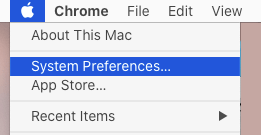
2. On the System Preferences screen, click on Security & Privacy option.

3. On Security & Privacy screen, switch to FileVault tab and then click on Turn ON FileVault button.
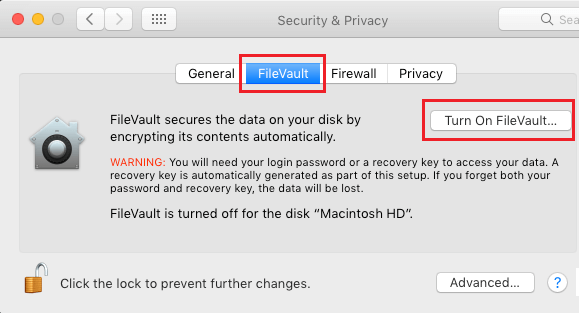
Note: If you are not logged-in to Admin Account, click on the Lock icon and enter Admin Password to authorize this change.
4. On the next screen, you can select your iCloud Account to unlock FileVault Encrypted Disk or select the option to Create a Recovery Key in order to unlock the Encrypted Disk.
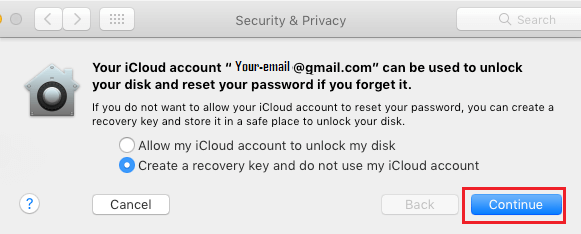
Select your desired option and click on the Continue button.
5. In case you had selected the option to Create a Recovery Key, make sure that you note down the Recovery Key that appears on the next screen and keep it in a secure place.
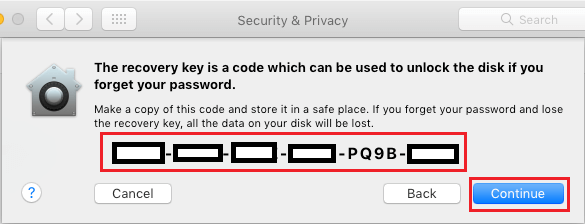
The FileVault Recovery key as generated by your Mac is a 24-character alphanumeric password alternative that can be used to Decrypt the drive, in case you happen to forget your password.
Note: If there are multiple User Accounts on your Mac, you need to Enable FileVault access individually for each User Account by clicking on Enable User button located next to the User Account.
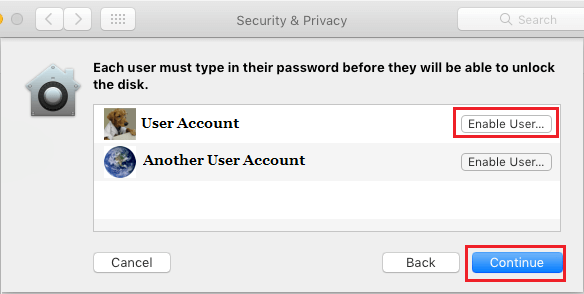
Once all the User are Enabled, click on the Continue button.
6. Finally, click on the Restart button to begin the process of Encrypting Files on your Mac.

The time to Encrypt Files will depend on the amount of Data on your Mac and also on the speed of the Disk. The process will be faster, if your Mac is equipped with SSD Drive.
Advantages of FileVault Encryption on Mac
As mentioned above, FileVault Encrypts all the Files and data on your Mac, which makes it practically impossible for anyone to gain unauthorized access to Files and Data on your Mac.
This ensures that your data and personal information is protected, even if you happen to misplace or lose your Mac or it gets stolen.
Disadvantages of FileVault Encryption on Mac
Although FileVault is easy to use, it is not suitable for everyone. It is not recommended for those who do not need such high level of security and especially not recommended for those who are likely to forget or lose passwords.
FileVault Encryption is so powerful that there is really no way to recover your data in case you happen to lose your password and the backup recovery key.
Also, FileVault uses on-the-fly encryption which can lead to a noticeable decrease in performance on older Macs.
How to Disable FileVault Encryption on Mac
At anytime, you can disable FileVault Encryption on your Mac by following the steps below.
1. Click on Apple Icon located in the top menu bar of your Mac and click on System Preferences in the drop-down menu.

2. On the System Preferences screen, click on Security & Privacy option.

3. On Security & Privacy screen, switch to the FileVault tab and click on Turn OFF FileVault button.
4. On the next screen, select Disable FileVault option and click on Restart & Turn Off Encryption.
5. Wait for your Mac to automatically reboot and begin the decryption process.
Decrypting the Drive can take its own time, depending on the amount of Data stored on your Mac and speed of the Disk Drive.